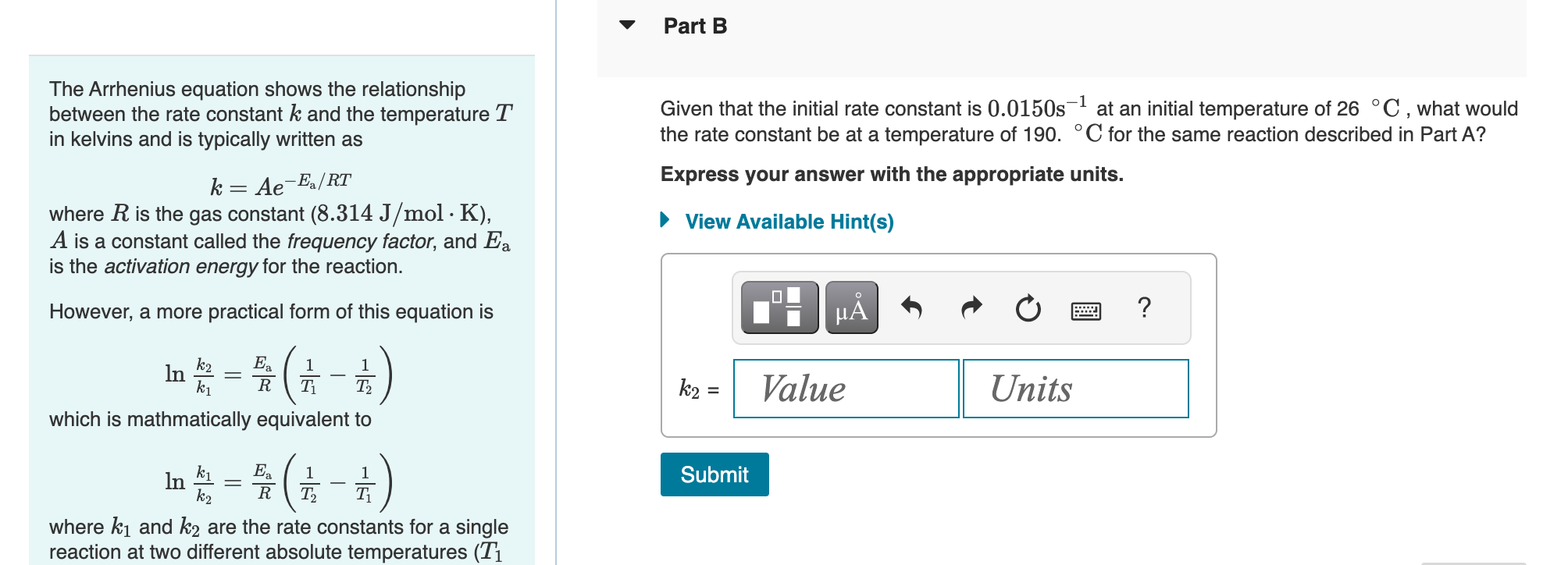Home /
Expert Answers /
Chemistry /
the-arrhenius-equation-shows-the-relationship-part-a-between-the-rate-constant-k-and-the-temperatu-pa599
(Solved): The Arrhenius equation shows the relationship Part A between the rate constant k and the temperatu ...
The Arrhenius equation shows the relationship Part A between the rate constant and the temperature in kelvins and is typically written as The activation energy of a certain reaction is . At , the rate constant is . At what temperature in degrees Celsius would this reaction go twice as fast? where is the gas constant , is a constant called the frequency factor, and Express your answer with the appropriate units. is the activation energy for the reaction. However, a more practical form of this equation is which is mathmatically equivalent to where and are the rate constants for a single reaction at two different absolute temperatures
The Arrhenius equation shows the relationship between the rate constant and the temperature Given that the initial rate constant is at an initial temperature of , what would in kelvins and is typically written as the rate constant be at a temperature of for the same reaction described in Part ? Express your answer with the appropriate units. where is the gas constant , is a constant called the frequency factor, and is the activation energy for the reaction. However, a more practical form of this equation is which is mathmatically equivalent to where and are the rate constants for a single reaction at two different absolute temperatures
Expert Answer
from the Arrhenius equations for two different temperatures {(ln)k1k2}=EaR{1T2?1T1}....(1)wherek1andk2 are the rate constantS for

